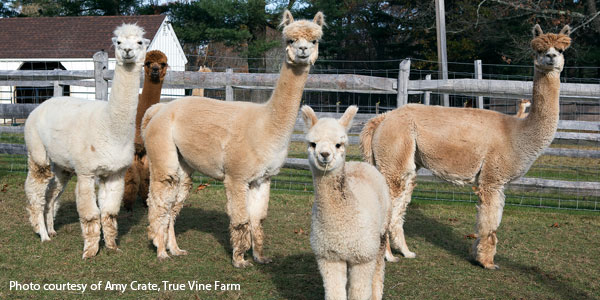AlpacaGram 7.46 | Disaster Preparedness for Alpaca Owners
 | |||
| |||
Disaster Preparedness for Alpaca OwnersImportant Information from the AOA Government and Industry Relations Committee (GIRCom)Hurricane season begins around June 1 and ends around Nov 30. The warmer weather will bring the threat of fires, and with the storms that we have seen there may be the possibility of flooding. The most important thing that alpaca owners can do to lessen the impact of any disaster is to be prepared. Depending on the type of disaster and resources available, you may have to decide whether to evacuate your animals or shelter in place. The following are suggestions that you can consider to be better prepared for a disaster. They are not all-inclusive and specific measures that you may take are dependent on the size of your herd, and what type of disaster is most likely in your area. Ensure all animals have some form of identification—microchip, neck tag—this will help facilitate their return. If your alpacas are registered with AOA, and you record the microchip number in the database, which can be done at any time, that information may assist in the identification and return of your alpacas. Evacuate animals whenever possible. Arrangements for evacuation, including routes and host sites, should be made in advance. Alternate routes should be mapped out in case the planned route is inaccessible. Remember that once mandatory evacuation from an area is ordered, friends will not be allowed into the area to help you. If you are planning to move your alpacas out of state, be aware of the receiving state health requirements. The evacuation sites should have or be able to readily obtain food, water, veterinary care, handling equipment, and facilities. Ensure vehicles and trailers needed for transporting and supporting your alpacas are available. Halters, leads, and trained animals will facilitate loading easily. If you do not have enough trailers to transport all your animals, develop a list of others who may be able to help transport your animals. If evacuation is not possible a decision must be made whether to move your alpacas to an available shelter or turn them outside. This decision should be based on the type of disaster and the soundness and location of the shelter. Prepare an evacuation kit. This might include copies of registration papers (a source of identification), and a list of contacts, evacuation routes, and health records. Develop a buddy system. You should consider having an arrangement with a buddy farm in a different threat area to house one another’s animals if an evacuation becomes necessary. You may not be readily available if an emergency occurs and may need to rely on others to help with your alpacas in an emergency. Post in your barn area a list of numbers and types of animals, the location of your halters, leads and disaster kit, your emergency contact information, and contact information for your veterinarian. The following are websites that can provide additional information and tips:
Texas A&M AgriLife Extension Service experts have produced videos and publications to help ranchers/livestock owners prepare for a hurricane. Preparedness publications are available through the Texas Extension Disaster Education Network (EDEN) website at http://texashelp.tamu.edu. Several videos are available including Hurricane Preparedness for Livestock Owners, parts 1 and 2. Video 1 can be found at http://bit.ly/2q6PLy7. Video 2 can be found at http://bit.ly/2pBkQqq. | |||
|
|
© 2020 Alpaca Owners Association, Inc.


